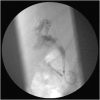A Review on the Management of Biliary Complications after Orthotopic Liver Transplantation
- PMID: 30944822
- PMCID: PMC6441650
- DOI: 10.14218/JCTH.2018.00028
A Review on the Management of Biliary Complications after Orthotopic Liver Transplantation
Abstract
Orthotopic liver transplantation is the definitive treatment for end-stage liver disease and hepatocellular carcinomas. Biliary complications are the most common complications seen after transplantation, with an incidence of 10-25%. These complications are seen both in deceased donor liver transplant and living donor liver transplant. Endoscopic treatment of biliary complications with endoscopic retrograde cholangiopancreatography (commonly known as ERCP) has become a mainstay in the management post-transplantation. The success rate has reached 80% in an experienced endoscopist's hands. If unsuccessful with ERCP, percutaneous transhepatic cholangiography can be an alternative therapy. Early recognition and treatment has been shown to improve morbidity and mortality in post-liver transplant patients. The focus of this review will be a learned discussion on the types, diagnosis, and treatment of biliary complications post-orthotopic liver transplantation.
Keywords: Bile leak; Biliary tract complication; Orthotropic liver transplantation; Stricture.
Conflict of interest statement
The authors have no conflict of interests related to this publication.
Figures






References
-
- Stratta RJ, Wood RP, Langnas AN, Hollins RR, Bruder KJ, Donovan JP, et al. Diagnosis and treatment of biliary tract complications after orthotopic liver transplantation. Surgery. 1989;106:675–683. discussion 683–684. - PubMed
-
- Rerknimitr R, Sherman S, Fogel EL, Kalayci C, Lumeng L, Chalasani N, et al. Biliary tract complications after orthotopic liver transplantation with choledochocholedochostomy anastomosis: endoscopic findings and results of therapy. Gastrointest Endosc. 2002;55:224–231. doi: 10.1067/mge.2002.120813. - DOI - PubMed
Publication types
LinkOut - more resources
Full Text Sources
